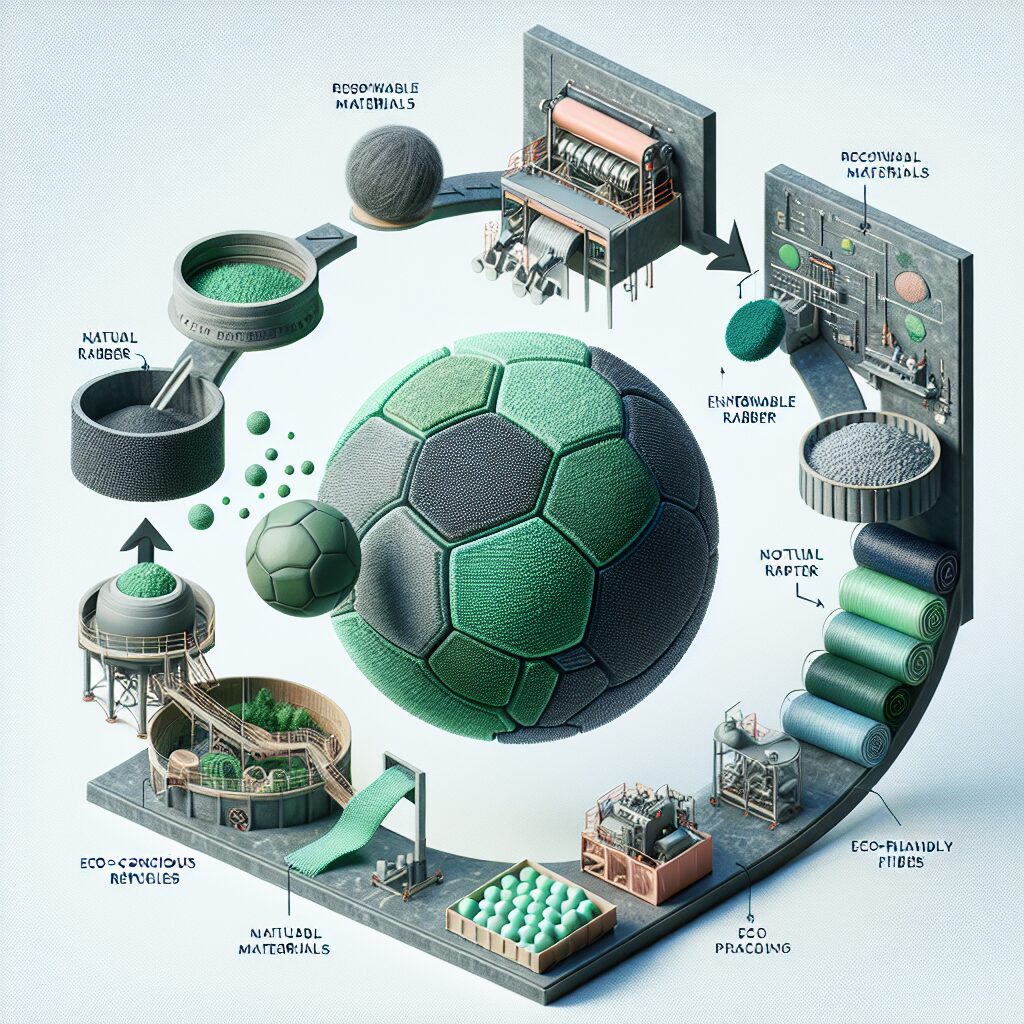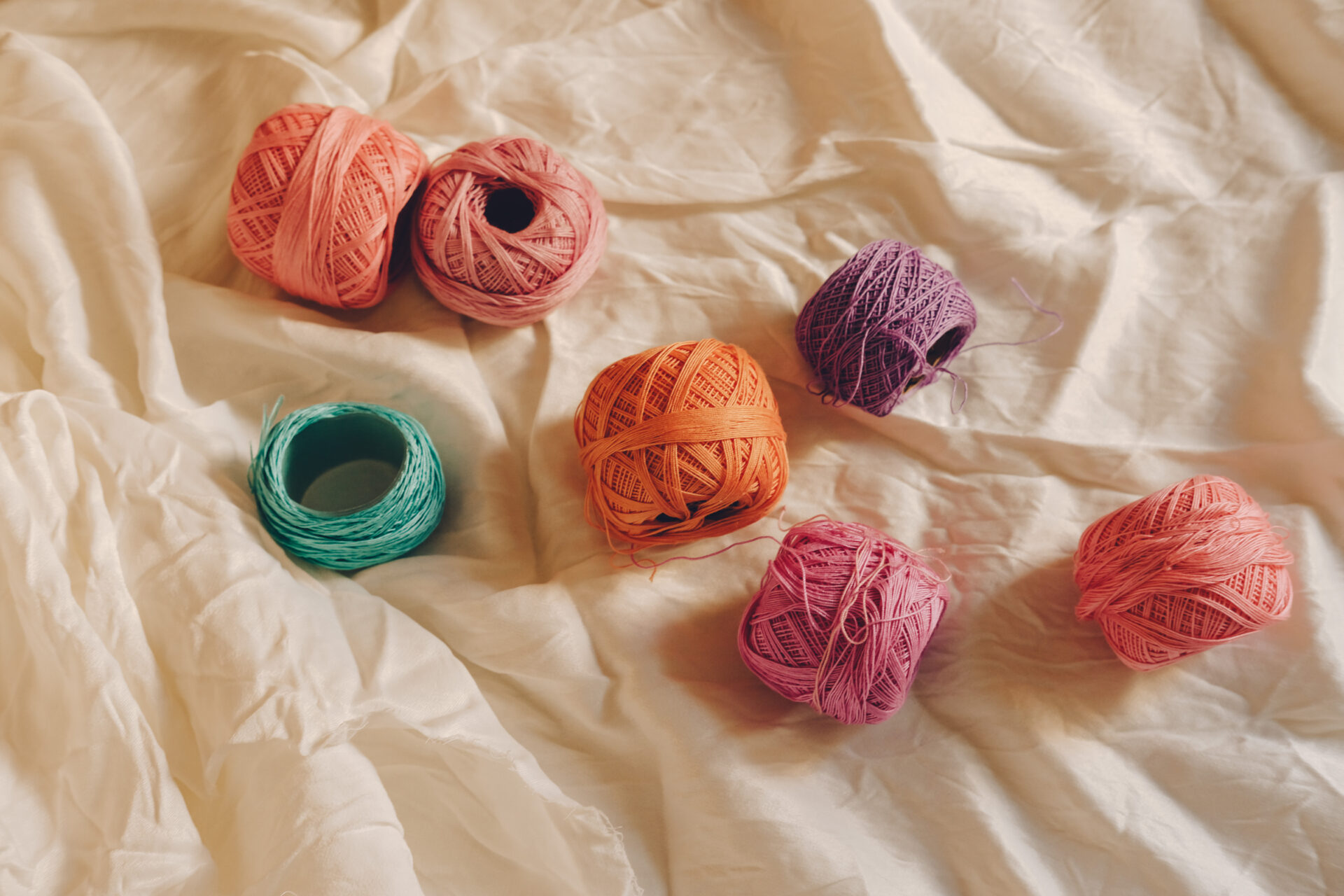Sustainable Materials: Eco-Conscious Ball Fabrication is a topic that addresses the growing demand for environmentally friendly sports equipment. In today’s world, where climate change is a pressing issue, it is crucial to adopt sustainable practices in every aspect of our lives, including sports. When it comes to ball fabrication, sustainable materials can play a significant role in reducing carbon footprint and minimizing environmental impact. For instance, did you know that traditional sports balls are often made from synthetic materials like PVC or polyurethane, which are derived from fossil fuels? This means that the production and disposal of these balls contribute to greenhouse gas emissions and waste accumulation. However, by utilizing sustainable materials, such as recycled rubber or organic fibers, manufacturers can create eco-conscious balls that not only perform well but also contribute to a more sustainable future.
One of the key impacts of using sustainable materials in ball fabrication is the reduction in carbon emissions throughout the production process. By opting for recycled rubber or organic fibers, manufacturers can significantly decrease the need for extracting new raw materials. This not only conserves natural resources but also reduces the energy-intensive processes associated with material extraction and manufacturing. Additionally, sustainable materials are often biodegradable or recyclable, allowing for a more circular economy. Imagine a future where sports balls can be easily recycled or composted at the end of their lifespan, minimizing landfill waste. These unique features of sustainable materials make them an attractive choice for both athletes and environmentally conscious individuals alike.
Now that we understand the importance of adopting eco-conscious practices in ball fabrication, let’s delve into the key takeaways. In the following sections, we will explore specific sustainable materials that are revolutionizing the sports industry, their benefits, and some inspiring case studies of successful implementation. Join us as we discover how sustainable materials are transforming the way we play sports, making our games not only exciting but also aligned with a greener future.
Key Takeaways
1. Sustainable materials are becoming increasingly important in the fabrication of balls, with designers and manufacturers seeking eco-conscious alternatives to traditional materials such as leather or synthetic fabrics.
2. Innovations in sustainable ball fabrication include the use of recycled or upcycled materials, such as discarded fishing nets, plastic bottles, and even ocean trash, contributing to the reduction of waste and pollution.
3. A key focus of sustainable ball fabrication is reducing the carbon footprint, achieved through various means like employing renewable energy sources during the manufacturing process and implementing efficient production systems to minimize energy consumption.
4. Sustainable materials used in ball fabrication are not only beneficial for the environment but also offer improved performance and durability. These materials often possess excellent moisture-wicking properties, enhanced grip, and are resistant to wear and tear, satisfying athletes’ needs while being eco-friendly.
5. Collaboration and partnerships among designers, manufacturers, and nonprofit organizations are crucial for the successful development and adoption of sustainable materials in ball fabrication, allowing players and sports enthusiasts to enjoy their favorite games while contributing to a more sustainable future.
What are the Sustainable Materials for Eco-Conscious Ball Fabrication?
The Importance of Sustainable Materials
Sustainable materials play a crucial role in eco-conscious ball fabrication. They help reduce the negative impact on the environment, promote ethical practices, and support the overall sustainability of the sports industry. By opting for sustainable materials, manufacturers can create balls that are not only high-performance but also environmentally friendly.
Natural and Biodegradable Materials
One key aspect of eco-conscious ball fabrication is the use of natural and biodegradable materials. These materials, such as organic cotton, hemp, and natural rubber, are derived from renewable sources and have minimal environmental impact. Moreover, they can break down naturally over time, reducing waste and pollution.
Organic Cotton
Organic cotton is grown without the use of synthetic fertilizers or pesticides, making it a sustainable choice for ball fabrication. It is hypoallergenic and breathable, providing a comfortable feel during play. Additionally, organic cotton promotes fair trade practices, ensuring the well-being of cotton farmers.
Hemp
Hemp is a versatile and sustainable material that can be used in ball fabrication. It requires fewer pesticides and water compared to traditional crops, making it an eco-friendly choice. Hemp fibers are durable, making balls resistant to wear and tear while maintaining their performance.
Natural Rubber
Natural rubber, derived from the sap of rubber trees, is a renewable and sustainable material. Choosing natural rubber for ball production reduces the dependence on synthetic rubber, which is derived from fossil fuels. Additionally, natural rubber provides excellent grip and bounce, enhancing the playing experience.
Recycled Materials
Another approach to eco-conscious ball fabrication is the use of recycled materials. By repurposing materials, manufacturers can reduce waste and promote resource conservation. Various materials can be recycled and incorporated into ball production, such as recycled polyester, recycled rubber, and recycled plastics.
Recycled Polyester
Recycled polyester, made from post-consumer plastic bottles, is an eco-friendly alternative to traditional polyester. By utilizing recycled polyester in ball fabrication, the demand for new raw materials is reduced, resulting in energy savings and decreased carbon emissions.
Recycled Rubber
Recycled rubber, sourced from old tires or other rubber waste, is an excellent sustainable material for ball construction. It maintains the desired properties of rubber while diverting waste from landfills. This approach contributes to a circular economy by extending the lifespan of discarded rubber products.
Recycled Plastics
Recycled plastics, including HDPE and PET, can be transformed into high-quality materials for eco-conscious ball fabrication. By utilizing recycled plastics, manufacturers can prevent plastic waste from entering oceans and landfills, reducing environmental harm and promoting resource efficiency.
Innovative Alternatives
Advancements in technology have led to the creation of innovative alternatives for eco-conscious ball fabrication. These materials offer sustainable solutions while maintaining the performance and durability required for sports.
Plant-Based Plastics
Plant-based plastics, derived from renewable resources such as corn and sugarcane, are a promising sustainable option. They have a lower carbon footprint compared to traditional plastics and can be biodegradable or compostable. Utilizing plant-based plastics in ball production promotes a more sustainable and circular economy.
Biodegradable Foams
Biodegradable foams, made from natural materials like algae or mushroom fibers, provide an eco-conscious alternative to traditional foam materials. They offer similar cushioning and shock absorption properties while being biodegradable and compostable. Using biodegradable foams contributes to the reduction of synthetic waste in landfills.
Conclusion
- Choose sustainable materials like organic cotton, hemp, and natural rubber for eco-conscious ball fabrication.
- Consider using recycled materials such as recycled polyester, recycled rubber, and recycled plastics to reduce waste and promote resource conservation.
- Explore innovative alternatives like plant-based plastics and biodegradable foams to enhance sustainability while maintaining performance.
- Support eco-conscious brands that prioritize sustainable materials in their ball production.
- Spread awareness about the importance of sustainable materials and encourage others to make environmentally friendly choices in the sports industry.
Frequently Asked Questions
1. What are sustainable materials?
Sustainable materials are those that are obtained from renewable resources and are produced in an environmentally friendly and socially responsible manner. They are designed to have a minimal impact on the environment while maintaining their integrity and performance.
2. Why is eco-conscious ball fabrication important?
Eco-conscious ball fabrication is important because traditional ball manufacturing processes can be harmful to the environment. By using sustainable materials and adopting environmentally friendly production methods, we can reduce carbon emissions, protect natural resources, and mitigate the negative impacts of ball production on the ecosystem.
3. What are some commonly used sustainable materials for ball fabrication?
Some commonly used sustainable materials for eco-conscious ball fabrication include organic cotton, hemp, recycled polyester, and natural rubber. These materials are sourced ethically, require reduced energy consumption during production, and have lower carbon footprints compared to their conventional counterparts.
4. Are eco-conscious balls as durable as traditional balls?
Yes, eco-conscious balls can be just as durable as traditional balls. The sustainable materials used in their fabrication undergo thorough testing to ensure they meet the necessary performance standards. With advancements in technology and manufacturing processes, eco-conscious balls can offer the same level of durability and quality.
5. How can eco-conscious ball fabrication help in reducing waste?
Eco-conscious ball fabrication contributes to waste reduction by utilizing recycled materials and reducing the consumption of non-renewable resources. Additionally, the adoption of sustainable practices in production and distribution reduces the overall waste generated throughout the supply chain.
6. Are eco-conscious balls suitable for professional sports?
Yes, eco-conscious balls can be suitable for professional sports. Many professional sports organizations are increasingly recognizing the importance of sustainability and are embracing eco-friendly initiatives, including the use of sustainable materials for their equipment, including balls. As long as the eco-conscious balls meet the required performance standards, they can be used in professional sports settings.
7. Are eco-conscious balls more expensive?
Eco-conscious balls can sometimes be slightly more expensive due to the cost of sustainable materials and eco-friendly manufacturing processes. However, as eco-conscious practices become more mainstream and the demand for sustainable products increases, the prices are becoming more competitive. In the long run, investing in eco-conscious balls can contribute to a healthier environment and a more sustainable future.
8. How can consumers contribute to eco-conscious ball fabrication?
Consumers can support eco-conscious ball fabrication by consciously choosing to purchase balls made from sustainable materials. By opting for eco-friendly options, consumers create demand for these products, encouraging manufacturers to continue producing them. Additionally, consumers can spread awareness about sustainability and encourage sports organizations and manufacturers to prioritize eco-conscious practices.
9. Are there any certifications or standards for eco-conscious balls?
Yes, there are certifications and standards for eco-conscious balls. Organizations like the Global Organic Textile Standard (GOTS) and the Forest Stewardship Council (FSC) provide certifications for sustainable materials used in ball fabrication, ensuring their ethical and environmental credibility. Additionally, sports governing bodies often have regulations and standards for the equipment used, including balls, which can include sustainability considerations.
10. Can eco-conscious ball fabrication have a positive impact on the global sports industry?
Absolutely. Eco-conscious ball fabrication can have a significant positive impact on the global sports industry. By embracing sustainable materials and practices, the sports industry can become a leader in environmental responsibility. This shift can inspire other sectors and individuals to make sustainable choices, ultimately contributing to a more sustainable future for both the sports industry and the planet.
Final Thoughts
In a world urgently seeking sustainable solutions, eco-conscious ball fabrication offers a significant opportunity to minimize the environmental impact of sports. By shifting towards sustainable materials and processes, we can reduce carbon emissions, conserve resources, and protect ecosystems, all while still enjoying the thrill of the game. Every choice we make, from the equipment we use to the organizations we support, can contribute to a more sustainable sports industry and a healthier planet.
As consumers, we have the power to drive change by demanding eco-conscious products and supporting brands that prioritize sustainability. By choosing eco-conscious balls, we not only enhance the quality of our sporting experiences but also actively contribute to a future where sports and environmental responsibility go hand in hand. Let us seize this opportunity to foster a greener, more sustainable sports culture that benefits not only athletes but also the planet we all share.




